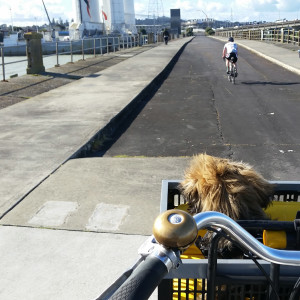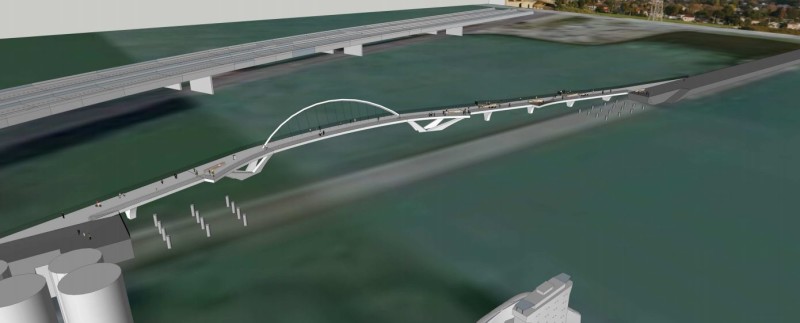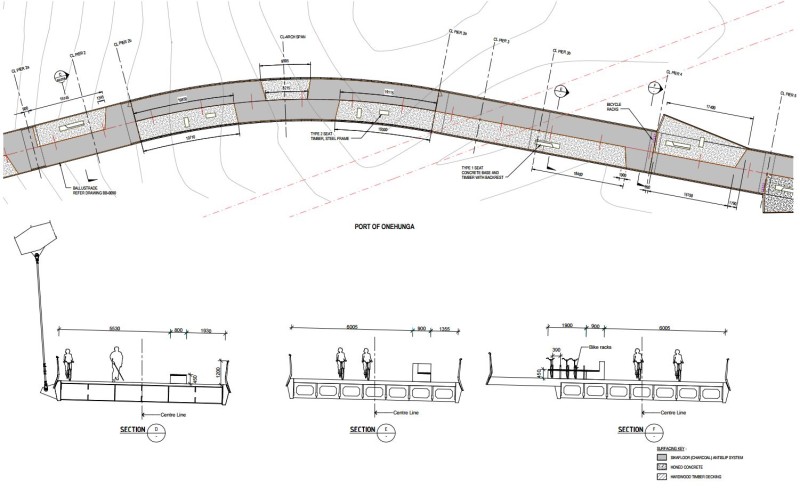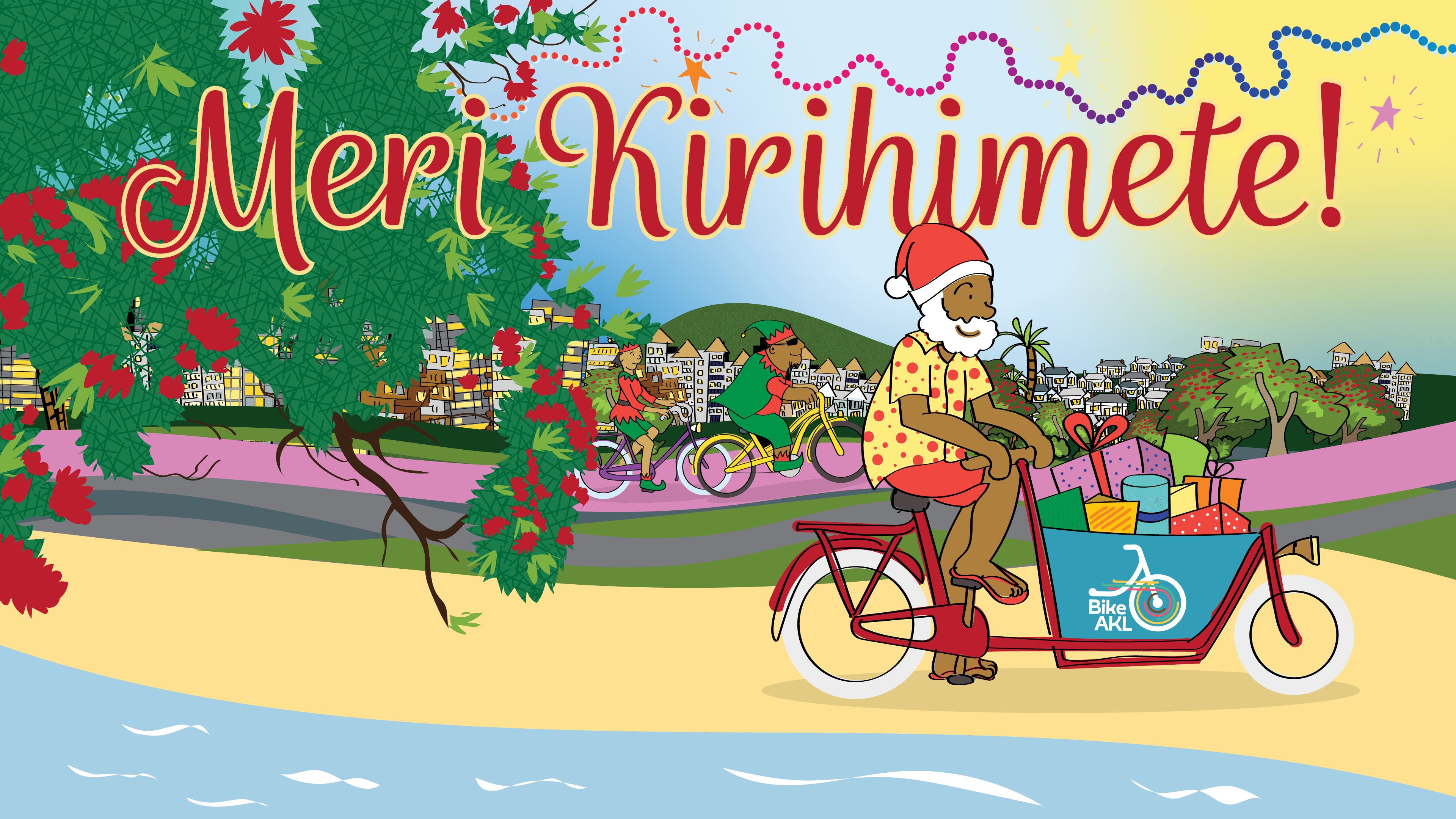The saga of Mangere Bridge reads like a litany of woes. The troubles began with the very first timber version, which opened in 1875 and was soon attacked by shipworms. It was also so narrow pedestrians could not pass motor vehicles safely.
 The replacement – commissioned in 1915, and designed by R.F. Moore who was responsible for the Grafton Bridge – was wider, but so low that only the smallest boats could pass underneath. Apparently it was fitted with an anti-tank road block during WW2 (and might also have been mined!).
The replacement – commissioned in 1915, and designed by R.F. Moore who was responsible for the Grafton Bridge – was wider, but so low that only the smallest boats could pass underneath. Apparently it was fitted with an anti-tank road block during WW2 (and might also have been mined!).
Over the decades, it famously began sinking into the harbour, and was finally closed to traffic in the 1970s after the big new adjacent motorway bridge was completed.
For many years, the Old (once new) Mangere Bridge has been a well-used transport connection for cyclists and pedestrians, as well as a much-loved community spot for fishing enthusiasts. Alas, the slumped old concrete structure, knocked about by ships and weather and tides, has steadily deteriorated and is to be replaced just as it turns 100.
The replacement Old Mangere Bridge has been in the works for several years – now it’s reached the Resource Consent stage. Today (Tuesday 13th October) is your last opportunity to give feedback on NZTA’s application for Resource Consent for the new Old Mangere bridge replacement.

For the replacement design, NZTA has commissioned a top design team of Pete Bossley of Bossley Architects and Sean Burke of Isthmus, alongside consultants Aurecon. Their brief: to make the new bridge a special community place as well as a superb inspirational design element for the Manukau Harbour. The new design includes ideas from community consultation, because for the people of Onehunga and Mangere Bridge the old bridge is an important part of their communities.

We’re excited about the new bridge, and we want to see it retain its important role as a transport connection for cyclists and walkers, as well as being an attractive place for fisherfolk.
It’s crucial that the design be clear and convenient for cyclists using the bridge as a transport connection as well as for meandering leisure cyclists and strolling pedestrians. Here’s the current surface design plan:

We have a couple of concerns:
- We’d like to see a clearer designated central cycle route, as it seems that the proposed surface treatments create a weaving pattern for cyclists. The intention seems to be that slow cyclists will use the meandering route while faster cyclists will ignore the “route” and pass directly across surface patterns – but we think this seems likely to cause confusion and potential conflict for other users as well as cyclists.
- In theory, the central zone (between the seats) is supposed to be clear space: “a 3m corridor, clear of any furniture, the length of the structure”. But as you can see from the image above, the use of different materials and colours around the seats (non-slip and concrete surfaces) will likely encourage fishers and other “leisure users” in these areas to spread out more into the middle section, creating potential conflict with those riders and walkers who are trying to move efficiently across the bridge. We’d like to see the surface treatments around the benches rethought to provide more of a visual clear space – i.e. we advise that they not extend all the way to the centre line.
- Although the seating layout was revised following our earlier input this year, it looks as if the southern section (towards Mangere) still has some seats staggered very tightly, with potential for congestion and confusion.
If you’re interested in commenting on the design as part of the Resource Consent application, you can add your voice here. Again, feedback closes at the end of today, Tuesday October 13.
For other thoughts on the replacement bridge see Transportblog’s overview. The NZTA project page has further background.
— Kirsten Shouler and Richard Barter




